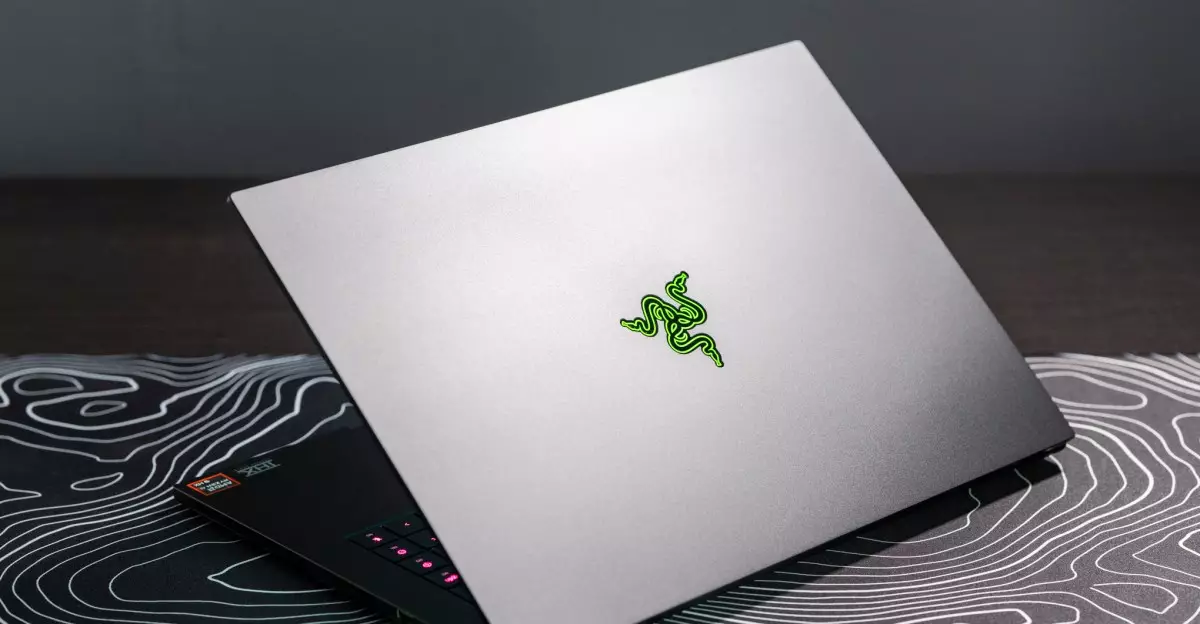The Razer Blade 16 has become a hot topic among gaming enthusiasts and professionals alike, effectively merging high-end gaming capabilities with the sleek aesthetic of traditional laptops. With its latest iteration housing the Nvidia RTX 5090 GPU, Razer aims to redefine the expectations for laptops that cater to both gamers and creators. In this article, I will explore the impressive features of the Blade 16, as well as the concerns and potential pitfalls that accompany this high-stakes engineering feat.
Aesthetic Appeal Meets Functional Design
Razer has always prioritized aesthetics, and the Blade 16 is no exception. With its slimmer profile—reduced by an entire 7mm and also lighter by 0.8 pounds—this laptop deftly navigates the space between gaming and productivity. The journey towards thinner, lighter machines is not just about looks; it enhances portability, making it easier for users to transport their gear. However, this minimalist design raises an eyebrow: is there a compromise when it comes to performance and cooling?
The structural changes might look good on paper, but their impact on thermal management is a concern. Will this chassis design hold up under extensive pressure during gaming or demanding creative tasks? The previous generation’s bulk gave it some leeway in terms of heat dissipation. Only time will tell if the Blade 16 naturally adapts to sustain longer gaming durations without throttling.
Display and Controls: A Mixed Bag
The Blade 16’s display certainly impresses with a 2560 x 1600 OLED panel boasting a rapid 240Hz refresh rate. For gamers, this translates into fluid visuals that enhance both competitive play and immersive experiences. However, as much as I’d love to revel solely in its graphics, the keyboard deserves some critique. The addition of a column of macro keys on the right side has proven to be more of a hindrance than a feature, frequently misinterpreting my intended key presses. A traditional inverted-T arrangement would have been wiser, enhancing usability and minimizing frustration.
Further complicating matters is the trackpad, which, while generally competent, also raises the stakes for accuracy during frantic gaming sessions. Does Razer prioritize aesthetics over pure functionality? In a device retailing at a staggering $4,499, expectations for refinements in everyday usability should be met with precision.
Performance Analysis: Potential vs Reality
The RTX 5090 GPU is touted as a significant upgrade, capable of leveraging DLSS and frame generation tools effectively. However, initial tests indicate a discrepancy. While the GPU claims to be about 20% more efficient than its predecessor, the real-world battery performance remains less than stellar. In typical usage scenarios, struggling to last even five and a half hours on basic tasks raises questions about its overall reliability.
The AMD Ryzen AI 9 HX 370 “Strix Point” CPU promises terrific performance, arguably putting it on par with competitors like the 2024 Asus ROG Zephyrus G16. Still, the inability to sustain a full workday without constant recharging could undermine its appeal for professionals. At nearly five grand, demanding a long-lasting battery should be a baseline expectation, especially for a device that brands itself as a jack-of-all-trades.
Price Point: A Double-Edged Sword
The price tag attached to the Razer Blade 16 is undeniably staggering. At $4,499.99, it positions itself in a lofty tier, where buyers are inundated with superior options from the Apple ecosystem and various gaming brands. Take the $2,000 MacBook Pro; it provides exceptional performance, endurance, and compatibility within creative workflows, leaving ample budget for a solid gaming setup. Is the slick proposition of having a single device powerful enough to overshadow such economically balanced alternatives?
Moreover, the offered performance should align with the asking price. While there’s no denying that the Blade 16 offers a visually stunning experience that delivers high-quality graphics in gaming, the question persists: how feasible is it for the everyday user when it falters under routine tasks? The allure of an all-in-one device is enticing, yet if reliability is sacrificed, consumers might find themselves reevaluating their priorities.
Looking Forward: The Future of Gaming Laptops
Despite rising doubts surrounding its performance and price, the Razer Blade 16 embodies a vision that intertwines the realms of gaming and professional use. Its aesthetic is commendable, and it has the power to execute demanding tasks—if, and only if, it can overcome its initial setbacks. Time will reveal if Razer can solidify its reputation as a pioneer or if it will falter under the weight of its ambitions. As the landscape of technology evolves, the expectations will only increase—will the Razer Blade 16 rise to the occasion, or will it prove to be yet another high-priced gamble? Only continued testing will elucidate its true worth.

